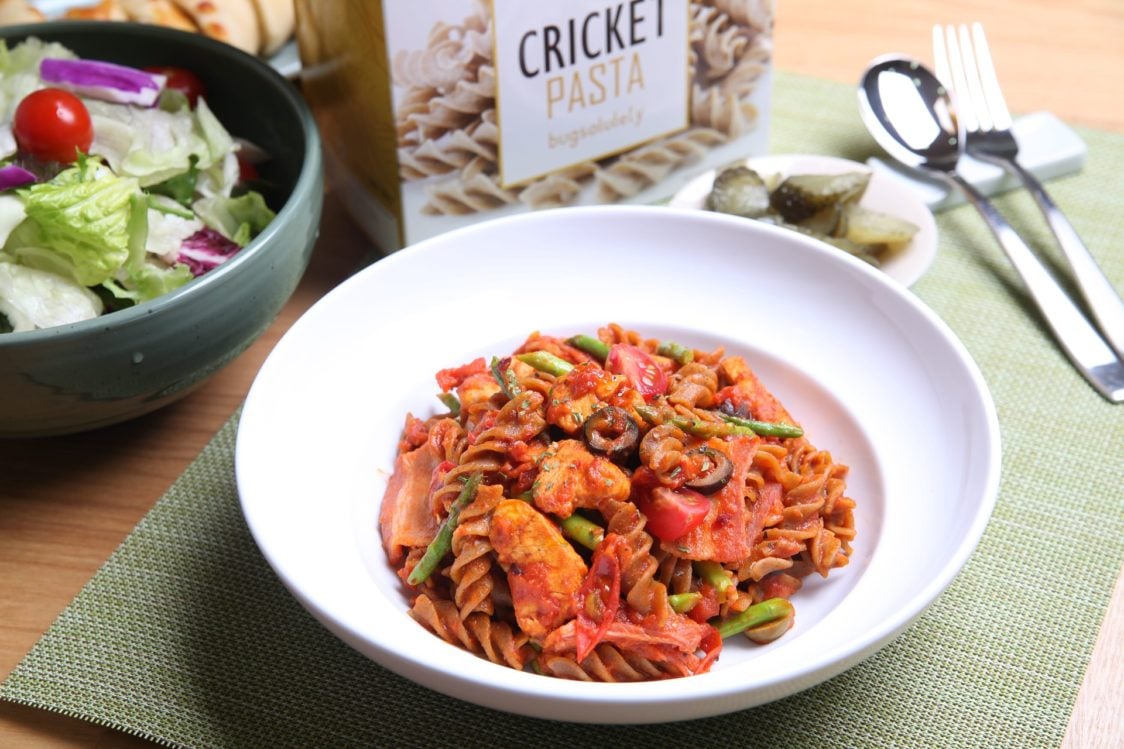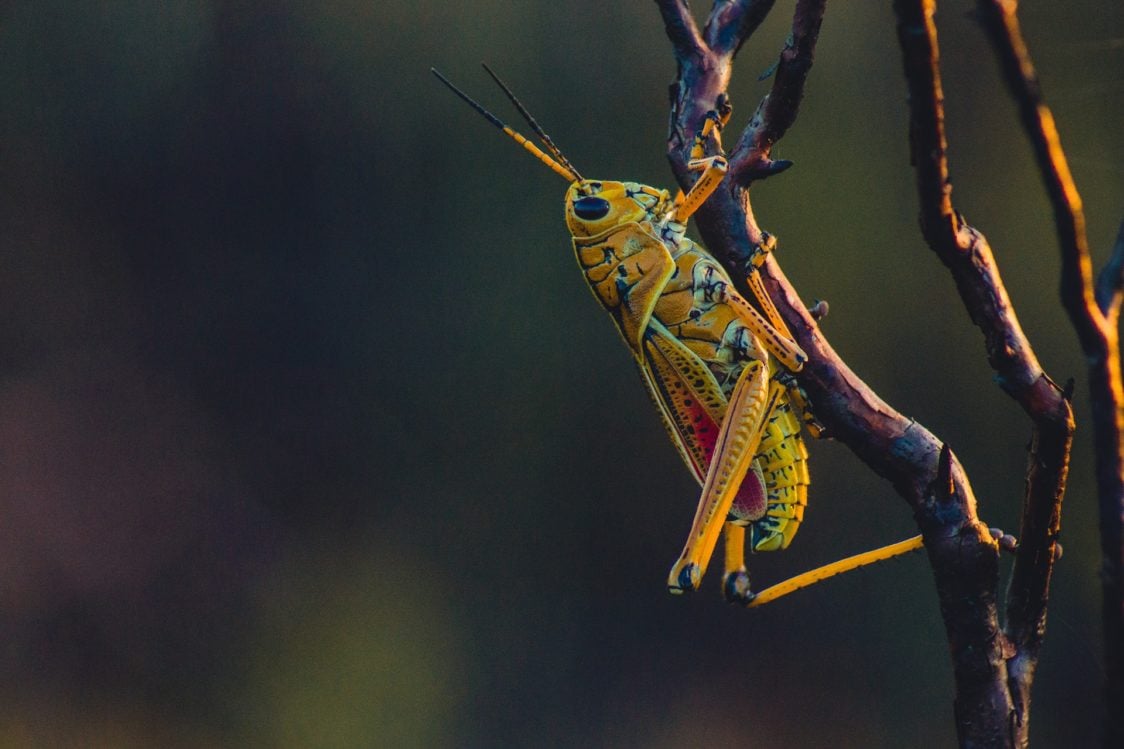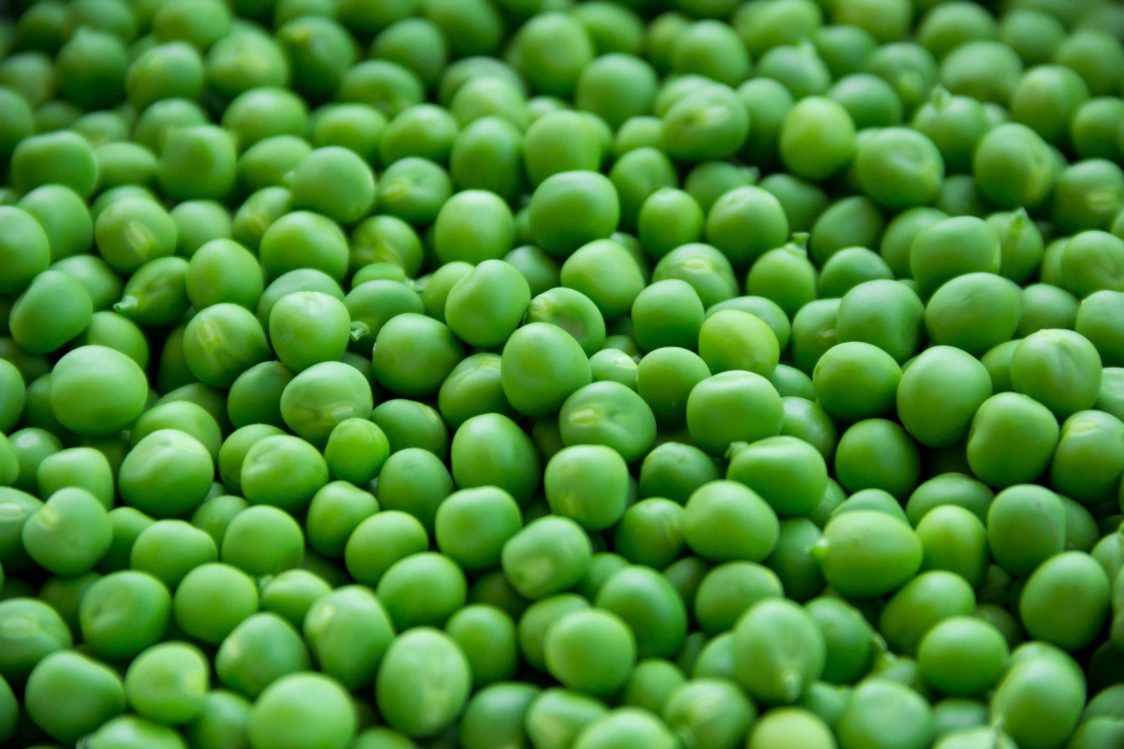Table of Contents
One would not be able to survive without the food and the human diet has undergone significant changes throughout the history. Let´s mention for example the changing attitude towards the egg consumption. In addition to right nutritional composition, availability and chemical treatment, we also care about the ecological side. The consequences of mass animal husbandry do not have to be presented separately. Recently, insects and beetles have often been mentioned as a new possible alternative for improving sustainability of the planet. Is this the future we have to prepare for? In the article we will introduce you the benefits, disadvantages, facts and interesting information about insects, more precisely insects on a plate.
Insects and beetles – food of the future?
“Don´t be afraid of beetles in the food, they are proteins.” I don´t know how about you, but I have heard this wannabe funny comment several times. It is as well known as the comment that one day we all will eat insects. Insects on a plate is not a music of the future. Approximately 2000 species of insects are already being consumed in 113 countries around the world and native cultures in Africa, Asia or South America consume some species of insects already for centuries. [1]
Consumption of beetles or insects is not new and there is also official term for it – entomophagy. In certain parts of the world, it is not something uncommon to collect larvae, eggs, pupae or adult insects for consumption. [2]

I believe that many of you have wrinkled the forehead or nose at this point. The aim of the article is not to “get hooked” on baked crickets, but to bring you information from around the world. Many of you have problem with consuming certain foods that other may consider as delicacy. For example, such sushi or seafood, are you lovers of them or you can´t stand them at all? Food is also a subject to trends and there are several examples. Nowadays, lobster is sought-after and quite luxurious delicacy, but it was once eaten by a poor part of the population and was consider as “sea cockroach”. You will certainly remember the popularity of certain types of food at a certain time. In the USA, Italian kitchen was “in” in 1950s, Mexican kitchen in 1970s and 1990s was all about sushi. [3]
By this, we just want to say that a certain part of diet popular in your region may be weird and disgusting to other cultures. In Mexico, Laos or Europe, escamoles are considered as a gourmet delicacy, it sounds similar as guacamole, but it´s actually ant eggs. In Bangkok, you can find up to 164 insect species on the market. Some are eaten for their nutritional content, some for their appearance. The most commonly consumed insect species include [1]:
- caterpillars
- beetles
- locusts
- crickets
- bees
- ants
Benefits of consuming insects
Nutritional content
When it comes to nutrients, insects often tend to be a source of protein, but in addition to protein, they contain fiber, healthy fats as well as vitamins and minerals. Nutrients in edible insects are similar and differences may be due to method of preparation, their origin or the way of their living. For a better overview of nutrients, we present a table with average values of nutrients in common sources of meat and insects, that were published in the study from 2015 [4] [5]:
| Energy value (Kcal) | Protein (g / 100 g portion) | Fats (g / 100 g portion) | Saturated fats (g / 100 g portion) | |
|---|---|---|---|---|
| Beef | 169 | 20,6 | 9,3 | 3,8 |
| Chicken meat | 152 | 19,9 | 7,2 | 1,81 |
| Pork | 186 | 20,1 | 12,4 | 3,5 |
| Cricket (adult) | 153 | 20,1 | 5,06 | 2,28 |
| Powdery mildew (larva) | 247 | 19,4 | 12,3 | 2,93 |
| Silkworm caterpillar (pupa) | 128 | 14,8 | 8,26 | 3,45 |
We mentioned that insects are not only the source of protein, but also vitamins and minerals. We present another table from the same source to compare the content of selected minerals and vitamins [5]:
| Iron (mg / 100 g portion) | Calcium (mg / 100 g portion) | Vitamin C (mg / 100 g portion) | Vitamin A (mg / 100 g portion) | Vitamin B1 – thiamine (mg / 100 g portion) | Vitamin B2 – riboflavin (mg / 100 g portion) | Vitamin B3 – niacin (mg / 100 g portion) | |
|---|---|---|---|---|---|---|---|
| Beef | 1,95 | 5 | 0* | 0 | 0,08 | 0,23 | 4,7 |
| Chicken meat | 0,88 | 8 | 1,1 | 0 | 0,075 | 0,16 | 6,5 |
| Pork | 0,8 | 7 | 0 | 0 | 0,77 | 0,235 | 5,6 |
| Cricket (adult) | 5,46 | 103 | 3 | 6,53 | 0,04 | 3,41 | 3,84 |
| Powdery mildew (larva) | 1,87 | 42,9 | 1,2 | 9,59 | 0,24 | 0,81 | 4,07 |
| Silkworm caterpillar (pupa) | 1,8 | 42 | – | – | 0,12 | 1,05 | 0,9 |
* the value “0” was used for trace amounts
In many countries, the consumption of insects is very common issue and they are a source of protein, calcium, iron and vitamin B12. Crickets contain the mentioned iron, calcium, B12, omega-3, but in addition, they are exceptional for one more thing – they are a full-valued source of protein. That means that they contain all 9 essential amino acids that our body can´t produce by itself and needs to take it from diet. This fact moves crickets to other full-valued source such as meat, milk products or eggs. From this point of view, they are even better choice than incomplete sources of protein, for example some proteins of plant origin. [6]

Don´t you have enough information about the sources of protein and their division to complete and incomplete? Read our article – High-quality protein – how to find out which source of protein is the best?
The idea of fried or cooked crickets may not be a tempting vision. What would you say about cricket flour? Full-valued source of protein, that in addition contains also fatty acids, iron, calcium, magnesium, selenium, potassium and vitamin B12. Nowadays you can buy a flour, protein bars or pasta from this flour. Its taste remains a question. Each of us perceives the taste of our own, but many describe the taste of cricket flour and protein as slightly nutty and also more pleasant than they ever thought. Even the taste of pasta from cricket flour is similar to ordinary pasta. You will usually notice only a slight difference in texture, which is “grainier” and similar to wholegrain pasta. After mixing with the sauce, they don´t taste particularly different. From the flour you can prepare pancakes or to add it to favorite smoothie. [9]

Proteins and insects are associated together because dried insects contain from 20 to 76 % of protein depending of the type. 100 g of locusts contain 14 – 28 g of protein and 14 g contains the same amount of red ants. In addition, 100 g of ants will ensure up to 71 % of daily iron intake. Maybe you find it disgusting, but let´s assume that they are parts of the world where they won´t have any problem to consume it. Who knows, maybe they would have problem with pork liver that is popular in several European countries. [10]
You might be interested in these products:
Sustainability of our planet
One of the main arguments for consuming the insects is “eco” side. Today´s food system has negative impact on our planet. Water use, pollution, deforestation or biodiversity loss are not negligible impacts. Whether you admit it or not, food system makes a significant contribution to climate changes through greenhouse gas emissions. According to United Nations, there will be a little more of us by 2050, more precisely 9.7 billion. From a dietary point of view, this will mean that twice as much food will be needed to feed such amount of people. Do you say that we will start growing and breeding more? Unfortunately, to feed such amount of people, we don´t have enough arable land. 2050 is very far for many people, because it is a horizon of 30 years, but today´s data show that there are already 7.8 billion of us. [3] [7] [8]
Compared to cattle, insects are a much more frugal choice, because they require less land, water and also emit less greenhouse gases. Insects farming today as a source of protein has lower impact on the planet than conventional sources. [7]
Insect farming can be interesting for farmers in terms of land and machinery, because it requires less lass and the use of machinery. This fact can be advantage, especially in less developed countries. Another argument is economic side, because insect farming can be interesting source of incomes. For example, in countries with an average gross income of 5640 dollars per year, an insect farmer can earn 5 000 to 10 000 dollars per year. [10]

In addition to proponents of insect consumption for improving the sustainability, there are also people with different attitudes. Counter-arguments include, for example, the claim that the collection of wild insects becomes excessive. Another concern is environmental impact, which can me more complex, for example due to the insect feed with a more complicated sustainability status. Third argument is the processing of insects, which may cause a significant use of energy. Enthusiasm for the new approach is nice, but we should keep a sober overlook. Compared to more conventional sources, it is necessary to consider all aspects that will show to which extend the insect farming is a better choice. [11]
Disadvantages of consuming insects
Allergens
Insects are being consumed in many parts of the would, but this does not mean that they can´t cause allergic reaction. Their consumption should be considered by people with crustacean allergy, because some research has found that insects may cause allergic reaction similar to crustaceans. Insects and crustaceans belong to arthropods in the animal kingdom. Insect allergy has been reported in caterpillars, grasshoppers, bees, cicadas or silkworms. [10] [14]
Toxins and pesticides
Do not forget that all the time we talk about edible insects. As we already mentioned, around 2000 species of insect are being consumed. It is similar to mushrooms, some carry the risk of poisoning and therefore do not belong it the basket. Certain types of ants and bees contain toxins, which can be dangerous. Also, metabolic steroid content has been determined in certain species of beetles. Their frequent consumption can cause health issues. In addition, you are surely interested in how is it with pesticides and insects. Pesticides and herbicides in the field are harmful to the people, animals and insects. Maybe you did not know, but some insect species can handle higher doses of heavy metals than mammals. In case of insect consumption, there is a slightly higher risk of lead or arsenic poisoning. It is a minimal danger, but it must be taken into account. Agency EFSA (The European Food Safety Authority) has published the risk associated with the insect consumption. The report identifies possible biological and chemical risks, allergenicity and environmental risks related to farm insects. The report states that further research is recommended to better identify risks. Worldwide hundreds of insect are being consumed, but it is expected that demands for edible insect in EU countries will be limited to only few species such as crickets, grasshoppers or flies. The risk associated with pesticides is higher when collecting wild insects. There have been reported even cases of health issues in the world following the consumption of insect collected from the pesticide-treated areas. [10] [15] [16]

Last but not least, it is the anti nutrients, which prevent the absorption of nutrients. The insect exoskeleton contains anti nutrients, which reduces the protein absorption. The final and perhaps unnecessary warning is the risk of bacteria, they are everything and the insect is not an exception. In addition, insects feed on places full of bacteria such as rotten food. Do you think this problem only affects wild insect? Even several insect farms in Asia do not meet high hygiene standards and this may not be limited only to farms in Asia. [10]
Final comparison
Edible insects can be interesting alternative to conventional food, especially in the countries where its consumption have no history. We have introduced you few points of view and at the end, it is appropriate to compare insects also with protein of plant origin. If you are vegan or you don´t eat much meat, the overview is useful to consider protein from legumes or crickets. In the table you will find benefits and disadvantages of consumption of edible insect and protein of plant origin [12]:
| Edible insects – benefits | Edible insects – disadvantages | Protein of plant origin – benefits | Protein of plant origin – disadvantages |
|---|---|---|---|
| They are a source of protein and fats, contain essential amino acids. | Nutritional values may vary and protein digestibility decreases due to chitin. | The combination of legumes and cereals has a comparable protein content as meat. | Anti nutrients reduce the availability of protein as well as biological availability of micro nutrients. |
| Contain polyunsaturated fatty acids, vitamins and minerals. | We do not know how the nutritional content will change due to processing. | Higher fiber content and less saturated fats than in meat. | Meat substitutes can be full of sodium and added fat. |
| They are safe in controlled breeding and wild may be suitable after processing. | There is a possibility of allergies in people with crustaceans allergy and in wildlife there is a risk of contamination with toxins and pesticides. | They are safe after processing or heat treatment. | There is a possibility of allergies, for example in the case of soya or gluten. |
| They need less feed than livestock and breeding them can reduce the amount of greenhouse gas emissions. | At higher production, the impact on the environment is unknown and it it also necessary to identify suitable species and sources of bio-waste for breeding. | Compared to animal husbandry, they have lower carbon footprint. | Required energy costs in case of processed products. |

We believe that you read the article till the end and get more information about the insects on a plate. However, if you are still convicted that the insect will remain as “ugh!” that you would never take in your mouth, do not forget that is it a matter of a culture. The taste connected with culture, that determines what is edible and what is not. If you think that our culture does not allow beetles, we have a new information for you. According to Defect Levels Handbook published by US Food and Drug Administration (FDA), it is all right, if 100 g of chocolate contains 60 pieces of insects in 6 samples. [13]
Insects and beetles are not the music of the future most a significant part of the world. Modern agriculture is a burden on our planet and with a growing world population, it makes sense to look for ecological sources of nutrients. Who knows, in 100 years, insects may be a casual part of diet around the world and our great-grandchildren will not understand the worries of today´s people. We believe that we at least enriched you with new information. Do you want your friend to get information about insects and their consumption? Feel free to share the article.
[1] Tae-Kyung Kim, Hae In Yong, Young-Boong Kim, Hyun-Wook Kim, Yun-Sang Choi – Edible Insects as a Protein Source: A Review of Public Perception, Processing Technology, and Research Trends – https://www.ncbi.nlm.nih.gov/pmc/articles/PMC6728817/
[2] Entomophagy (Eating insects) – https://cisr.ucr.edu/entomophagy-eating-insects#:~:text=Entomophagy%20is%20the%20technical%20term,eat%20for%20thousands%20of%20years.
[3] Marcia Wendorf – The Explosion of Insect Protein – https://interestingengineering.com/the-explosion-of-insect-protein
[4] Sara Angle – Would You Try Ikea’s Experimental Insect-Based ‘Neatball’? – https://www.healthline.com/health-news/would-you-try-ikeas-insect-based-neatball#1
[5] CLR Payne, P. Scarborough, M. Rayner, K. Nonaka – Are edible insects more or less ‘healthy’ than commonly consumed meats? A comparison using two nutrient profiling models developed to combat over- and undernutrition – https://www.nature.com/articles/ejcn2015149.pdf
[6] Sarah Garone – I Hate Bugs. But Here’s Why I Tried Insect-Based Food – https://www.healthline.com/health/nutrition/insect-phobe-bug-protein#1
[8] Current World Population – https://www.worldometers.info/world-population/#:~:text=7.8%20Billion%20(2020),currently%20living)%20of%20the%20world.
[9] Preston Hartwick – Why Cricket Flour Is the Food of the Future – https://www.healthline.com/health/food-nutrition/cricket-flour-nutrition
[10] Amy Gardner – Edible Insects: The Good, The Bad And The Ugly – https://www.eatcrickster.com/blog/pros-and-cons-of-eating-insects
[11] Eustacia Huen – Why Eating Insects May Not Be As Sustainable As It Seems – https://www.forbes.com/sites/eustaciahuen/2017/04/30/why-eating-insects-may-not-be-as-sustainable-as-it-seems/#4e830cd244c1
[12] The pros and cons of alternative proteins – https://www.futurelearn.com/courses/engaging-with-controversies-in-the-food-system/0/steps/63410
[13] Honor Whiteman – Grub’s up! How eating insects could benefit health – https://www.medicalnewstoday.com/articles/311139
[14] Emerging food allergy: Edible insects – http://allergenbureau.net/emerging-food-allergy-edible-insects/#:~:text=Food%20allergy%20to%20insects%20has,been%20reported%20in%20the%20literature.
[15] Mark Kinver – EFSA report considers risks of eating insects – https://www.bbc.com/news/science-environment-34476742
[16] Is it dangerous to eat insects? – http://www.bugsfeed.com/are_they_dangerous


Add a comment